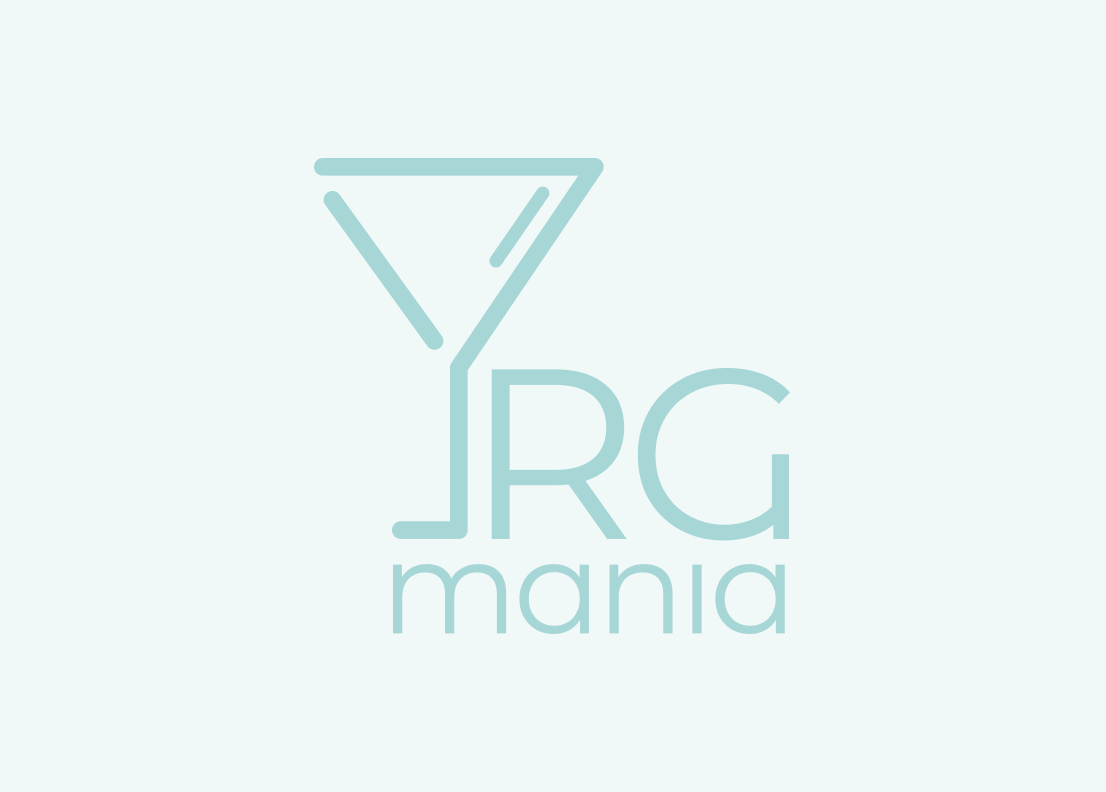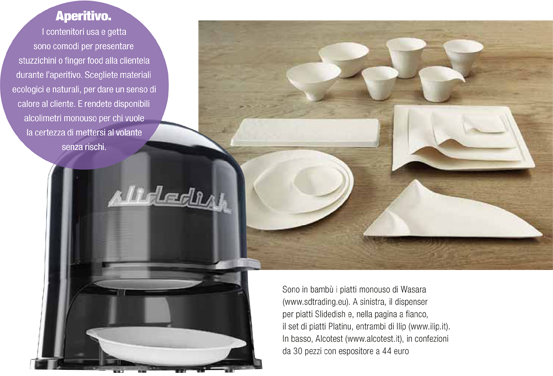Disposables are not always an economical and environmentally friendly choice, but in many cases the manager cannot do without them. Here's how to choose them for venue hygiene, takeout and table setting and mise en place.
by Riccardo Oldani Magic word: disposable. But judiciously. The market for out-of-home supplies, and for bars in particular, has been invaded in recent years by disposables. It started with cleaning cloths, towels and napkins, and then moved on to tablecloths, cutlery, plates and glasses. Not everything on the market is of quality, not everything is pleasant for the cliente and, aboveall, economical for the manager.
Observes Roberto Carcangiu, an experienced catering chef who has often been confronted with the use of objects or materials of this kind: "Disposable is not always the right solution: you have to be very shrewd in your choice, remembering that what is washable and reusable is usually also cheaper, because it can be used over and over again and produces less impact on the environment. I am referring especially to tableware, plates and glasses. Such glass or ceramic products can be found at low prices and can be purchased even for a single occasion or special evening without spending much more than disposables." Above all, with disposable tableware there is one thing you absolutely must not do, according to Carcangiu: wash and reuse plastic finger food cups, plates or containers. "They can become real receptacles for bacteria, so beware of such practices."
Having said that, however, it should be stressed that in many cases disposable is an unavoidable solution. "I'm thinking especially of napkins," says Carcangiu, "which have reached very high levels of quality and an exceptional wealth of patterns, designs and colors. Materials such as Tnt (non-woven fabric) have a texture to the touch and a pleasant appearance, they are resistant and versatile."
Smart tablecloths
"In this aspect -she continues- disposable tablecloths become a valuable ally of the bartender who wants to "refresh" the bar: just a simple touch, switching to a new pattern of tablecloths or napkins, is enough to transform an environment without the need for more important interventions." Repurposing the bar on a frequent basis by simply employing new tablecloths (the most important companies in the industry have endless catalogs) is also a move, according to Carcangiu, "to let the customer know that you take care of them, creating a comfortable environment." Of course, changing the tablecloths is not enough; it also takes the appropriate gestures of courtesy and attention, but the customer notices these changes. Just as. on the contrary, he notices if the disposable tablecloth remains on the table too long without being changed. Beware, then, of always giving the idea of great cleanliness. After all. disposables were created precisely to improve the hygienic conditions of places such as bars; it would be nonsense to forget their original vocation. "Much better," Carcangiu observes, "to use products of this kind than to resort to tablecloths or cloth napkins, which become lysis by dint of washing and which industrial laundries uniform into a dull, dull color quite different from the original one. It is also preferable to use Tnt placemats in place of washable plastic ones, which then, wiped clean as best they can with a damp rag, tend to take on a foul odor."
Hygiene products also find wide use in the bar. Paper towels have been a real revolution for public venues since the 1970s, since they began to be massively popular in Italy. Today they represent a billion-dollar market for companies in the sector: suffice it to say that in the United States alone, 2.3 billion paper towels are consumed every second. The most important group in the industry worldwide, with a market penetration of 17.56 percent, is Kimberly-Clark, which bills more than $20 billion annually, 16 percent of which is in the professional sector (including public places, hospitals, hotels, communities).
 We are talking about a huge amount of products, from birth destined to become waste after one use. Therefore, it is important, even for the manager, to target those that ensure maximum eco-sustainability. Disposable wipes or napkins cannot be dispensed with, but be careful to choose the most suitable ones, e.g., biodegradable and 100 percent recyclable. There are also disposable products made of paper from recycled material, such as recovered textile fibers, recognizable by the presence on the label of the Ecolabel or certified ISO 14024, ISO 14021 and ISO 14025. Studies carried out on towels, pannicarta and disposable hygiene textiles have shown hygienic performance superior to that of "multipurpose" products, because they prevent the proliferation of germs and bacteria typical not only of towels but, also and especially, of sponges and cloths for surface cleaning. Different is the case with disposable tableware, especially plates, glasses, and small containers, which can prove to be a good ally for the manager only if they are chosen judiciously. "There are few occasions for a bar to employ such products," Carcangiu says. The only one where disposables are irreplaceable is takeout, so it is best to choose biodegradable containers." Among the most popular materials is bamboo, from which we make Chinese chopsticks for food and now, also bowls, plates, cutlery. They do not pollute, they are compostable, but it is difficult to tell where the raw material, which ideally should come from sustainable crops, comes from. Plus they have high prices. Those who decide to employ them should try to check if the manufacturer has an environmental certification.
We are talking about a huge amount of products, from birth destined to become waste after one use. Therefore, it is important, even for the manager, to target those that ensure maximum eco-sustainability. Disposable wipes or napkins cannot be dispensed with, but be careful to choose the most suitable ones, e.g., biodegradable and 100 percent recyclable. There are also disposable products made of paper from recycled material, such as recovered textile fibers, recognizable by the presence on the label of the Ecolabel or certified ISO 14024, ISO 14021 and ISO 14025. Studies carried out on towels, pannicarta and disposable hygiene textiles have shown hygienic performance superior to that of "multipurpose" products, because they prevent the proliferation of germs and bacteria typical not only of towels but, also and especially, of sponges and cloths for surface cleaning. Different is the case with disposable tableware, especially plates, glasses, and small containers, which can prove to be a good ally for the manager only if they are chosen judiciously. "There are few occasions for a bar to employ such products," Carcangiu says. The only one where disposables are irreplaceable is takeout, so it is best to choose biodegradable containers." Among the most popular materials is bamboo, from which we make Chinese chopsticks for food and now, also bowls, plates, cutlery. They do not pollute, they are compostable, but it is difficult to tell where the raw material, which ideally should come from sustainable crops, comes from. Plus they have high prices. Those who decide to employ them should try to check if the manufacturer has an environmental certification.We sincerely thank the Bargiornale editorial staff and journalist Riccardo Oldani for this article and for permission to publish it


